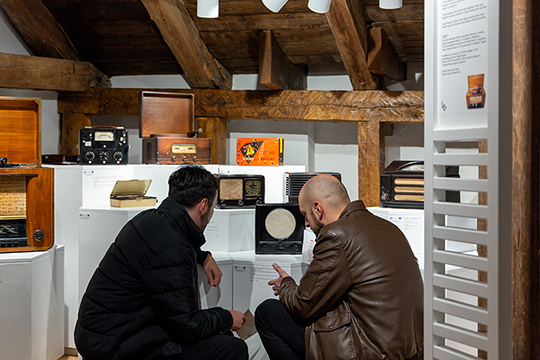
According to the recent survey of the museum attendance in Croatia carried out by the Museum Documentation Center, there were 5,235,765 museum visitors in 2019. Out of 160 registered museums, 134 participated in the survey (representing a response rate of 83%). Comparing the number of visitors in 2019 to that of the previous year, the attendance in Croatian museums has dropped by 211,116 visits.
The most visited museum, as in the previous year, is the Archaeological Museum of Istria (575,294 visitors), followed by the Split City Museum (389,814 visitors), the Klovićevi Dvori Gallery (353,262 visitors), the Dubrovnik Museums (234,457 visitors), and the Museums of Hrvatsko Zagorje (265,706 visitors). Among the nine museums that had more than one hundred thousand visitors in 2019 are the Nikola Tesla Technical Museum (194,850), the Archaeological Museum in Zadar (121,418), the Museum of Broken Relationships (111,798) and the Mimara Museum (101,671).
Both the Archaeological Museum of Istria and the Split City Museum that top the list of museum visitors also manage two of the most famous ancient monuments in Croatia – the Amphitheatre in Pula and the Cellars of Diocletian’s Palace in Split respectively. Similarly, the Klovićevi Dvori Gallery reports high visitor figures due to the Festival of Lights and the Advent, manifestations that take place in and around the Gallery attracting 280,000 visitors, while attendance at its temporary exhibitions makes up less than 9% of the total visitors.
If we take a closer look into the type of museum programs and the type of visitors, the attendance at permanent exhibitions increased by 200,000 from 2018, following the increase of foreign tourists in the same category by 160,000. On the other hand, the attendance at temporary exhibitions dropped from 1,193,435 in 2018 to 752,002 visitors in 2019, which can be explained by the fact that last year one museum reported some 400,000 visitors to their traveling outdoor exhibition.
A source of concern is the continuing decline in educational programs, which, from the 264,739 users recorded in 2016, fell to 136,582 in just three years, representing a drop of 51.5%. The number of children and youth in museums also continues to decline slightly. The number of preschoolers dropped from 56,366 in 2018 to 41,538 children last year, the number of elementary school visits even went up slightly (by 4,000) to 540,000, and the number of high school students dropped by 25,000 in the last two years (120,836 in 2019.).
The number of foreign tourists that visited Croatian museums increased by almost 200,000 in 2019. However, the recorded number of 1,228,216 tourists does not correspond to the actual situation as some museums still do not track tourist visits, among them, the Dubrovnik Museums, the Croatian Museum of Tourism, and the Museum of Apoxyomenos at the island of Lošinj.
Judging by the speed at which we managed to get a response to the survey this year, and the reduced number of "creative ways" to gather hundreds of thousands of visitors at bus stations and fish markets it is fair to assume the attitude of our museum community towards museum statistics is beginning to change.
Visitor survey 2019 (pdf)
(Maja Kocijan, published originally in News from the Museum World 109, 25 February 2020; translated by Ivona Marić)